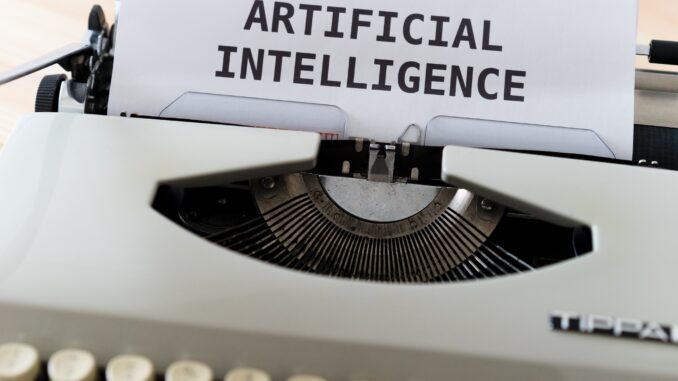
By Mason Sundquist
With the recent release of Biden’s Executive Order on the Safe, Secure, and Trustworthy Development and Use of Artificial Intelligence, the guidelines for the future of AI have been set and given direction to these emerging programs and companies. This will spur creativity and change the implementation of AI.
AI’s advantages lie in carrying out tasks faster than humans. From streamlining the process of writing, to cutting downtime on iterations of architectural sketches, AI helps in almost every industry even if not directly related to technology.
But these advantages easily become disadvantages when it comes to the possible consequences of using them in this manner. In the example of writing, while it can be used to work out a rough draft and smooth the work, cutting down time, it can easily be used to fabricate works and pass them off as real people: In Maggie Harrison’s article, Sports Illustrated Published Articles by Fake, AI-Generated Authors, Sports Illustrated published stories from multiple AI authors that turned out to be the same person.
And it doesn’t stop with writing. AI has already put people out of jobs, as talked about in Harry Jiangs and his co-authors’ article, AI Art and its Impact on Artists, workers from the Netflix Japan animation team. And not only jobs, but opportunities such as creating sketches for an architectural prompt. It has been suggested by Joern Ploennigs and Markus Berger in their article AI Art in Architecture that AI can be used in architecture to streamline the design process and have input directly from a client be put into the design. This will rob architecture students of the opportunity to show their creativity and effectiveness.
The use of AI is becoming much more widespread and integral to peoples lives. From searching through databases to giving information about historical events, the uses for AI keep growing in number. One sector of AI, AI art and image generators, is one of the fastest growing parts of AI. The decisions of people determine the power of these programs. The prompt given to an image generator by a human makes it art. And the choice to replace someone with AI comes from humans as well.
AI’s problems don’t stop at just replacement. In AI Art and its Impact on Artists, multiple copyright lawsuits have been filed against AI developers for using artwork as training data without the artist’s permission.
Another possible issue is companies becoming dependent on AI and ceasing to function without it. Some companies see AI as an opportunity for optimization and pushing efficiency without regard for their employees. Restrictions on uses for AI in an industry stops over reliance on these programs. Imagine your job used AI as the driving force and suddenly it had server issues. What if your artistic process relies on AI but the program is being investigated for copyright infringement?
Just because these programs need restrictions and monitoring, doesn’t mean we can’t use them. AI art is art in itself, and the medium itself is a new artform. Artists use many mediums in art, AI is just one of them.
I believe that restriction can spur creativity and innovation, and finding new ways of using these programs instead of the extreme reactions of either eradication or full embrace. This new executive action paves a brighter and more thoughtful path for the future of AI, one of integration instead of replacement.
Mason is a high school student who lives in Cloquet, Minnesota. He is a Native American (Lake Superior Chippewa), who is passionate about robotics and is currently enrolled in a college writing course through University of Minnesota Duluth.
